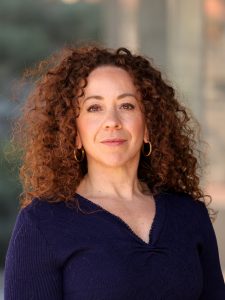Mónica Ramírez-Andreotta

Mónica Ramírez-Andreotta, M.P.A., Ph.D. is an Associate Professor of Environmental Science at the University of AZ. Using an environmental justice framework and participatory research methods, she investigates exposure pathways and communication strategies to translate environmental health research to action and achieve structural change.
Using an environmental justice (EJ) framework, Dr. Ramírez-Andreotta’s research program focuses on five primary areas of Environmental Health:
1) Participatory approaches to science to increase environmental health literacy (EHL) and achieve justice
2) Environmental monitoring – Developing a fundamental understanding of the fate and transport of contaminants in plant-soil and plant-atmospheric systems
3) Exposure science – Conducting culturally appropriate risk assessments
4) Science and risk communication – Creating innovative tools and data sharing practices
5) Data Science and Management – Ensuring integration, interoperability, and visualization of community vulnerability and resiliency data.
Dr. Ramírez-Andreotta is pioneering new methods in exposure science, identifying community-level resiliencies to combat environmental health vulnerabilities and devAeloping novel communication strategies. As demonstrated by her flagship co created community science (CS) programs – Gardenroots and Project Harvest, she applies the peer/empowerment education model, strives to elucidate and eradicate environmental health risks, and co-designs public health prevention/intervention programs and communication strategies to engage, build efficacy, and address structural challenges in underrepresented, underserved, and affected populations.
To do this, she integrates pollution and exposure science, sociology, art, and environmental/health communication. Within the context of public health, environmental monitoring and phytotechnologies are a primary prevention strategy and can successfully lead to the mitigation of harmful environmental exposures. Using participatory research methods, she is developing low-cost monitoring and clean up tools, designing effective data sharing strategies, and integrating CS environmental monitoring data with other data sets to enhance discoverability and reuse of data for research translation and better hypothesis generation.
